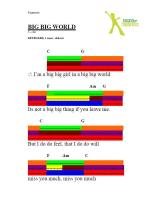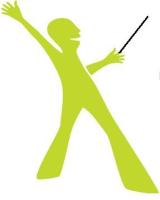The colour and number system is an evolution of the traditional note system, in the sense that each musical note has been given a colour or a number, for instance: C = green, C-sharp = 4, D = violet etc. Historically, the use of colours is not new. As far back in time as the 11th century, an Italian monk, Guido von Arezzo, paved the way for modern music notation. He began using colours as code signals for musical purposes. In Norway, colour was included in the piano education in music kindergartens already in 1948. There have been different ways of doing this. Before, nearly every teacher and every teching centre had their own method of colour codes, coloured light and other tools. In 1991, the Dissimilis National Association developed a colour note system which covers the whole note range, as opposed to previous colour based chord systems.
When songs are arranged using the colour system, the entire note sequence is coloured, and lyrics or bars are marked. When arranging chords for keyboards, these are marked individually with one single note, or two or three notes, depending on what the instructor finds to be the best approach. The system is also used for guitar. The gitar is tuned to a quint, E and H, and follows tabs or the basic note of the arrangemt. The same applies for bass guitar.
This is how a keyboard is marked:

Example of a music sheet:


|